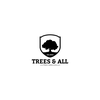In the verdant tapestry of a well-maintained landscape, trees stand as majestic sentinels, contributing not only to the aesthetic appeal but also playing a crucial role in environmental balance. Amidst the various aspects of nurturing a thriving ecosystem, the significance of two key practices, namely tree trimming and tree care, cannot be overstated. In this exploration, we delve into the repercussions of neglecting these vital aspects of arboriculture. Beyond their visual allure, trees require regular attention and maintenance to flourish and coexist harmoniously with their surroundings. As we unravel the consequences of forsaking the essential practices of tree trimming and overall tree care, uncovering the intricate balance that ensures both the health and safety of these silent giants in our natural landscapes.
Safety Hazards
Neglecting tree trimming poses imminent safety hazards. Accumulation of deadwood increases the risk of branches falling unpredictably, posing threats to people, property, and vehicles. Overgrown branches, especially during storms, become susceptible to breakage, amplifying the danger. These untrimmed arboreal structures compromise public safety, making it imperative to address the potential hazards promptly. Regular tree trimming not only enhances the visual appeal but mitigates these risks, ensuring a secure environment beneath the canopy of flourishing trees.
Disease and Pest Infestations
Failure to engage in regular tree trimming invites insidious threats of disease and pest infestations. Unchecked, fungal and bacterial infections can proliferate through untreated branches, jeopardizing the overall health of the tree. Overgrown trees become attractive hosts for pests, exacerbating the risk of infestations and subsequent damage. Timely pruning acts as a preventive measure, identifying and removing compromised branches before diseases spread. Vigilance in tree care is essential to safeguard the arboreal ecosystem, maintaining a resilient defense against the encroachment of ailments that may otherwise compromise the vitality and longevity of these natural guardians.
Reduced Sunlight and Air Circulation
In the shadow of neglected tree trimming, ecosystems face the silent threat of reduced sunlight and stifled air circulation. Overgrown canopies create a dense shield, limiting the penetration of vital sunlight and impeding the free flow of air. This deprivation disrupts the natural balance, fostering an environment prone to increased humidity and disease. The repercussions extend beyond aesthetics, impacting the health and vitality of the tree. Addressing this concern through strategic tree care involves pruning to restore a harmonious equilibrium, allowing sunlight to reach the depths and fostering optimal air circulation. In doing so, we revive the essential vitality of our arboreal companions.
Structural Issues
Untamed growth begets structural issues in trees, a consequence of overlooking the crucial practice of tree trimming. Multiple leaders and weak crotches emerge as silent threats, potentially leading to structural failures over time. Identifying and rectifying poor tree structure requires the precision of corrective pruning. This proactive measure ensures not only the tree's stability but also safeguards against hazardous scenarios. Neglecting such structural intricacies compromises the long-term health and resilience of these botanical guardians. Through meticulous tree care practices, we fortify the structural integrity, fostering a balance that stands resilient against the test of time and environmental challenges.
Aesthetic Concerns
Neglecting the artistry of tree trimming gives rise to consequential aesthetic concerns within our landscapes. Untrimmed trees, left to their own devices, can deviate from their natural grace, resulting in misshapen and unsightly forms. This visual discord disrupts the harmonious balance of a well-groomed environment. Beyond the functional benefits, the intrinsic beauty of trees enhances the overall allure of our surroundings. By embracing regular tree care, including thoughtful pruning, we not only preserve the structural elegance of these arboreal inhabitants but also contribute to the visual symphony that elevates the appeal of our natural spaces, fostering a pleasing and captivating landscape.
Impact on Nearby Structures
Unchecked tree growth can extend its impact beyond the boundaries of natural spaces, encroaching upon nearby structures with potentially detrimental consequences. Overgrown branches may trespass onto buildings, power lines, or other structures, posing risks of property damage and safety hazards. As these arboreal giants infringe upon human-made elements, the importance of timely tree trimming becomes evident. By maintaining a respectful distance through proactive tree care measures, we not only preserve the integrity of our built environment but also mitigate potential dangers, ensuring a symbiotic coexistence between the natural and constructed elements of our surroundings.
Stunted Growth
Neglecting the nurturing embrace of tree trimming can stunt the natural growth of these botanical guardians. Without strategic pruning to encourage healthy development, trees may succumb to unbalanced canopies and inhibited growth patterns. This stunted growth not only compromises the aesthetic appeal but also hampers the tree's overall vitality. By embracing the principles of meticulous tree care, we unlock the potential for robust and balanced growth, allowing these arboreal companions to thrive and contribute their full measure of environmental benefits. In fostering their growth, we perpetuate a resilient and flourishing coexistence within the intricate tapestry of nature.
Difficulty in Emergency Response
Unchecked tree growth can pose unforeseen challenges for emergency response efforts. Untrimmed trees may impede access routes, hindering the swift and efficient response of emergency services during critical situations. Clear pathways are essential for responders to navigate through the landscape easily. Prioritizing regular tree care, including trimming, not only promotes a safer environment but ensures unobstructed access in times of emergencies. Proactive measures in maintaining these natural surroundings contribute to a seamless collaboration between the needs of emergency response and the preservation of our arboreal landscape.
Conclusion
In the symphony of nature, the significance of tree trimming and care orchestrates a melody of health, safety, and beauty. Neglecting these practices jeopardizes the harmony, inviting hazards and compromising the very essence of our arboreal companions. Embracing vigilant tree care ensures a flourishing coexistence, nurturing both landscapes and lives.

No comments yet